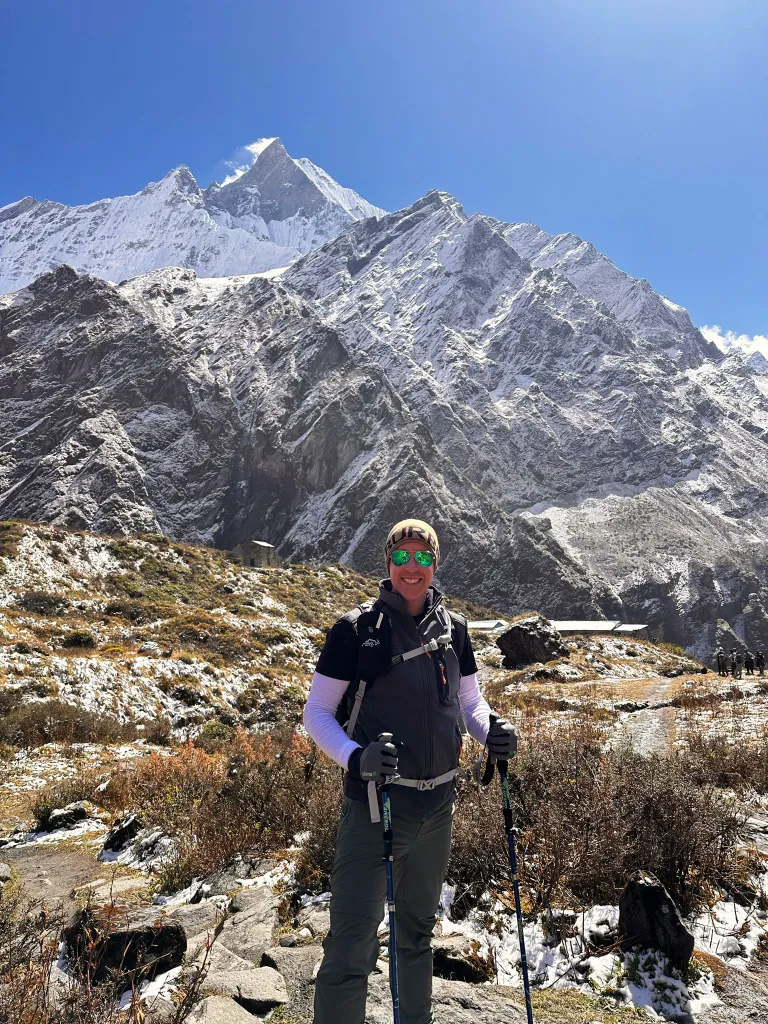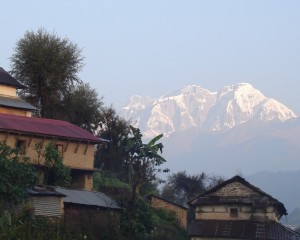Mera Peak vs Island Peak
Mera Peak Expedition
The world's highest trekking mountain, Mera Peak (6,476 m/21,247 ft), is situated in northern Nepal's Hinku Valley. The three summits of Mera that you will climb on the Mera Peak Expedition are Mera South, Mera North, and Mera Central. The trek was the hardest one ever in Nepal. You must have prior experience climbing at a high altitude to attempt the Mera Peak Climb. To ascend Mera Peak, hikers of all skill levels must have previous experience summiting bigger mountains. The exhilarating trip starts in Lukla and travels through the remote Khumbu region to the 4,610-meter Zatar La pass, where it continues to the base camp for the Mera peak.
During the Mera Peak Expedition, the majority of the climb calls for the employment of fundamental crampon and ice axe tactics. Five of the world's tallest mountains, including Cho Oyu (8,201 m/26,906 ft), Lhotse (8,516 m/27,939 ft), Everest (8,848 m/29,028 ft), Makalu (8,463 m/27,765 ft), and Kangchenjunga (8,586 m/28,169 ft), may be seen from the magnificent Mera Peak. In Nepal, the Mera Peak is also thought of as Everest's gateway. Most mountaineers usually begin their ascent of the Himalayas on this relatively easy peak, paving the way for future ascents of greater difficulty.
Island Peak Expedition
In Nepal's Khumbu region, Island Peak, also known as Imja Tse, is a well-liked trekking peak. One of the most popular peak expeditions, the Island Peak Expedition, ascends to a height of 6189m. The peak was given the name Island Peak by Eric Shipton's team in 1951 because, when viewed from Dingboche, it looks to be an island in an ice sea. The ridge that extends from Lhotse Shar's southernmost peak and divides it from it is known as the Island Peak. Island Peak Climb has been a well-liked trekking peak in the Khumbu region since a Swiss team made its first ascent of it in 1956.
The most well-liked holiday destination for individuals seeking adventure has been Island Peak. Starting at Lukla, the journey takes travelers through a variety of Sherpa communities and past stunning vistas of the surrounding high mountains. A semicircle is formed to the north of the mountain by Nuptse (7,879m/25,849ft), Lhotse (8,501m/27,890ft), and Lhotse intermediate peak (8,410m/27,562ft). During the Island Peak Climbing, the views of Makalu (8475m/27,805ft) in the east, and Baruntse, and Ama Dablam in the south enhance the appeal of the walk.

Cost for Mera Peak and Island Peak Expedition
The cost for both the Island Peak and Mera Peak Expedition with the Nepal Vision Treks & Expedition is approximately US $2580 per person. The price includes domestic airfares as well as the fees for the vehicles, your lodging in the valley, dinner in the city, and other expenses. The fees also cover the full board meals, lodging while on the hike, required documentation, an entry fee, permits, and a TIMS card. Additionally, Nepal Vision Treks will give you a down jacket and four seasonal sleeping bags. All municipal taxes and the First Aid-exclusive medical kit bag are also included in the price. Book your dates with us as soon as possible for the forthcoming Island Peak Expedition.
Is Island Peak Expedition More Difficult than Mera Peak Expedition?
For this adventurous 21-day Island Peak Climb, prior winter mountaineering expertise is crucial and required. It's very important to know how to put on crampons, walk securely with them on, use a walking or ice axe properly, tie them into a harness, and attach them to a man rope. The experience includes walking safely on a man rope over glacial terrain, but prior experience is unavoidable. Make the guide aware of your degree of experience so that they can teach and guide you for further process in the Island Peak Expedition. Hence, Island Peak Expedition is comparatively more difficult than the Mera Peak Expedition. But the ascent to Island Peak's base camp is rather simple. The easily available accommodation and flooding make the trek much easier.
You get the facilities like lodging in hotels and taking hikes through the valleys much more easily. Alpine abilities and teamwork on man ropes will become crucial after you start from base camp in the dark on loose scree and eventually onto the snow. Despite the huge difficulty in completing the Mera Peak Expedition, you may face some of the difficulties in the Mera Peak Climbing too. Let’s check some of them below:
Difficulties during the Mera Peak Expedition
Height Sickness
Wherever you are in the mountains, altitude is your main worry. In areas with higher elevations than 3500 meters, you could experience mountain sickness. It is a significant altitude shift to get to Mera Point from Kathmandu, which is just 1400 meters, and its highest peak, which is at 6,476 meters. You might therefore be vulnerable to getting acute mountain sickness (AMS) or altitude sickness.
Temperature/Weather
The weather and temperatures are unpredictable in higher elevations. In these areas, snowfall and a sudden drop in temperature are always possible. And if that happens, your already difficult climb up Mera Peak will become even more difficult. As a result, climbing may become more difficult if the weather or temperature significantly changes.
Route
Mera Peak can be climbed in three different methods, each of which is either difficult or easy. The first route is the easiest but also the shortest. In comparison to the first method, the second is easier. The paths for ascending Mera Peak vary in their degree of difficulty.
Physical state
Even though the Mera peak excursion does not involve any technical climbing, a good degree of fitness is nevertheless required. It is necessary to start your physical activity at least two to three months before your climb.

Best Time for the Mera Peak and Island Peak Expedition
If you've gone to Nepal before for an adventure, you might know when it's best to go climbing or trekking, the most exciting things to do in Nepal. Most visitors prefer the best seasons to climb Mera Peak or Island Peak in the fall and spring. In this season, there is little risk of snowfall or rain throughout these seasons, and the temperature is also constant. However, the two seasons of winter and monsoon are regarded as the off-season in Nepal for all adventurous excursions. Thus, spring and autumn are the two ideal seasons for hiking Mera Peak and Island Peak Expedition. Pack your bag with Nepal Vision Trek to get the best trip to the Himalayas of Nepal.






